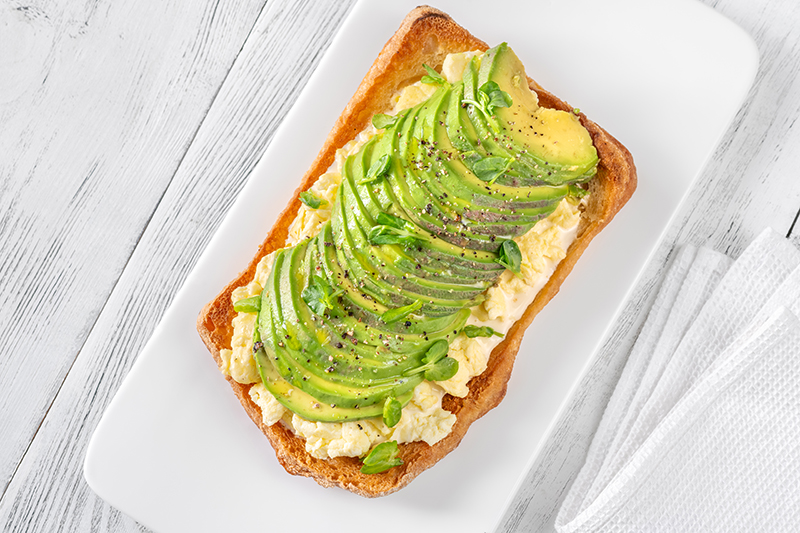But growing them is harming forests and waters says Viridiana Hernández Fernández
Consumers’ love for avocados seems to know no bounds. From 2001 through 2020, in the US alone consumption of this fruit laden with healthy fats tripled, rising to over 8 pounds per person yearly.
On average, 90 per cent of those avocados are grown in the southwest Mexican state of Michoacán. As with other foods that have become trendy, such as acai berries, or widely used, such as palm oil, intensive avocado production is causing significant environmental damage.
My research shows that raising avocados is economically beneficial in the short term for farmers, which in Latin America typically means medium-sized operators and agribusinesses. It also helps growers – people in rural areas who grow subsistence crops. Over time, though, every serving of avocado toast takes a toll on Michoacán’s land, forests and water supply. Rural growers, who lack the resources of large-scale farmers, feel those impacts most keenly.
Michoacán is the only place on earth that grows avocados year-round, thanks to its temperate climate, abundant rainfall and deep, porous volcanic soils that are rich in potassium, a vital plant nutrient. Even under favourable conditions, however, monocultures are never environmentally sustainable.
Introducing homogeneous, high-yielding plant varieties leads growers to abandon native crops. This makes the local ecosystem more vulnerable to threats such as pest infestations and reduces food options. It also erodes fertile soils and increases use of agrochemicals.
Monoculture also can drive deforestation. Mexican officials estimate that avocado production spurred the clearance of 2,900 to 24,700 acres of forests per year from 2010 through 2020. And it’s resource intensive: Avocado trees consume four to five times more water than Michoacán’s native pines, jeopardising water resources for human consumption.
Avocados have been a part of the Mexican diet since ancient Mesoamerica, but the Hass – the most popular variety worldwide today – was bred in modern California.
In the late 19th century, scientists from the US Department of Agriculture embarked on a mission to collect and send home samples of food plants from around the world. The goal was to adapt and grow these plants in the United States, reducing the need for food imports.
In the early 1960s, Michoacano cantaloupe farmers acquired lands to expand their production by growing avocados. Soon they focused on exclusively producing the Hass.
Many local Indigenous Purhépecha people, along with non-Indigenous campesinos, or country farmers, rented or sold land to the emerging avocado farmer class. In the 1980s, campesinos began to grow the fruit too. This was an expensive, long-term undertaking: It took four years for the trees to produce marketable avocados, but growers had to buy the trees, clear land for them and provide water, fertilizer and pesticides to help them grow.

Cantaloupe farmers could afford to invest capital for four years with no cash return. Campesinos had to rely on loans or remittances from family members abroad to develop avocado orchards.
As production expanded, agrochemical distributors, tree nurseries and packing houses sprouted on Purhépecha lands, clearing native pine trees and eroding the fertile soils. Mexico passed a law in 2003 that prohibited clearing forests for commercial agriculture, but by this time campesinos in Michoacán were already growing Hass avocados on a large scale.
Today, avocados are one of the most-regulated exports from Mexico. However, these rules do little to address the industry’s environmental impacts.
Farmers in Michoacán continue to clear woodlands, spray agrochemicals, exhaust aquifers and buy Purhépecha communal property, converting it to smaller, privately owned lots. Rising profits have spurred violence and corruption as some local authorities collude with organised crime groups to expand the market.
Visiting Michoacán on February 26, 2024, US Ambassador to Mexico Ken Salazar pledged that the US would modify its protocol to block imports of avocados grown in illegal orchards. However, this won’t restore local ecosystems.
As I see it, expecting small-scale growers to protect the environment, after the ecology and economy of Michoacán has been radically altered in the name of free markets and development, puts responsibility in the wrong place. And boycotting Mexican avocados likely would simply lead growers to look for other markets.
Diversifying agriculture in the region and reforesting Michoacán could help to restore the Sierra Purhepecha’s ecology and protect the rural economy. One Indigenous community there is successfully growing peaches and lemons for the domestic market and avocados for the international market, while also planting native pines on their communal lands. This is a potential model for other farmers, although it would be hard to replicate without state support.
In my view, importing avocados from different areas of Mexico and the world to reduce the Hass market share may be the most effective environmental protection strategy. In 2022, the USDA approved imports of avocados grown in the Mexican state of Jalisco. This is a start, but Jalisco will follow Michoacán’s trajectory unless the US finds more sources and promotes more avocado types.
As US eaters’ tastes become more adventurous, sampling avocados of different sizes, shapes, textures, tastes and origins could become a decision that’s both epicurean and environmentally conscious.
Viridiana Hernández Fernández is Assistant Professor of Latin American Environmental History, University of Iowa. This article is republished from The Conversation under a Creative Commons licence







Click here to change your cookie preferences